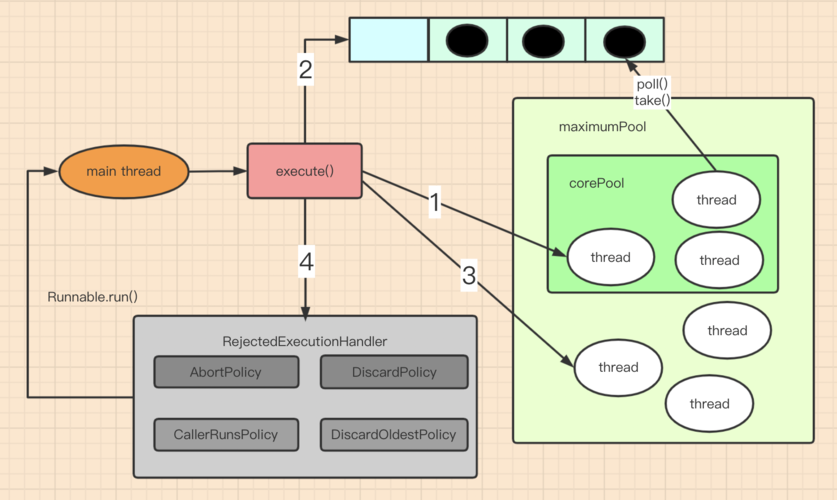C++線程池是一種多線程管理模型,把線程分成任務執(zhí)行和線程調(diào)度兩部分。線程任務被放入工作隊列中,工作線程通常會輪詢這個隊列從而獲取任務并執(zhí)行。這種機制實現(xiàn)的目標是將線程的創(chuàng)建、銷毀都由線程池來完成,節(jié)省了線程切換開銷。
正常情況下,我們啟動一個線程的流程需要進行以下操作:
1.申請系統(tǒng)資源,并創(chuàng)建新的線程
2.設置線程特性,如棧大小等參數(shù)
3.執(zhí)行線程任務
4.結(jié)束線程,釋放資源

而使用線程池則可以減少這些步驟,因為線程池中已經(jīng)預先創(chuàng)建了一定數(shù)量的線程,這些線程處于等待狀態(tài),能夠在有任務時立即響應處理。具體來說,C++線程池可以提供以下優(yōu)點:
- 對于頻繁創(chuàng)建、刪除線程的場景,使用線程池能夠減輕系統(tǒng)負擔,避免花費過高的時間和內(nèi)存開銷。
- C++線程池可以通過限制線程的最大數(shù)量、保留一些線程反復利用等方式避免線程數(shù)目暴增導致的問題。
- 線程池可以有效的處理任務隊列,并優(yōu)化任務處理的順序和方式,從而使任務處理效率提高。
C++線程池在操作系統(tǒng)并發(fā)編程中起到了重要的作用,對于多線程服務器開發(fā)、網(wǎng)絡編程等場景具有非常廣泛的實際應用。
下面是C++實現(xiàn)一個簡單的線程池的示例代碼,該線程池可以自動管理任務隊列、工作線程和互斥鎖。
#include < thread >
#include < mutex >
#include < queue >
#include < condition_variable >
// 定義任務類型
typedef std::function< void() > Task;
class ThreadPool {
public:
// 構(gòu)造函數(shù),默認啟動4個工作線程
ThreadPool(int numThreads = 4)
: m_stop(false)
{
for (int i = 0; i < numThreads; ++i)
m_workers.emplace_back(
[this] {
for (;;) {
Task task;
{
std::unique_lock< std::mutex > lock(this- >m_mutex);
this- >m_cond.wait(lock, [this] { return this- >m_stop || !this- >m_tasks.empty(); });
if (this- >m_stop && this- >m_tasks.empty())
return;
task = std::move(this- >m_tasks.front());
this- >m_tasks.pop();
}
task();
}
}
);
}
// 刪除默認構(gòu)造函數(shù)
ThreadPool() = delete;
// 添加新的任務到任務隊列中
template< class F >
void enqueue(F&& f)
{
{
std::unique_lock< std::mutex > lock(m_mutex);
m_tasks.emplace(std::forward< F >(f));
}
m_cond.notify_one();
}
// 停止線程池運行
~ThreadPool()
{
{
std::unique_lock< std::mutex > lock(m_mutex);
m_stop = true;
}
m_cond.notify_all();
for (std::thread &worker: m_workers)
worker.join();
}
private:
// 工作線程池
std::vector< std::thread > m_workers;
// 任務隊列
std::queue< Task > m_tasks;
// 互斥鎖
std::mutex m_mutex;
// 條件變量
std::condition_variable m_cond;
// 停止標志
bool m_stop;
};
 電子發(fā)燒友App
電子發(fā)燒友App





